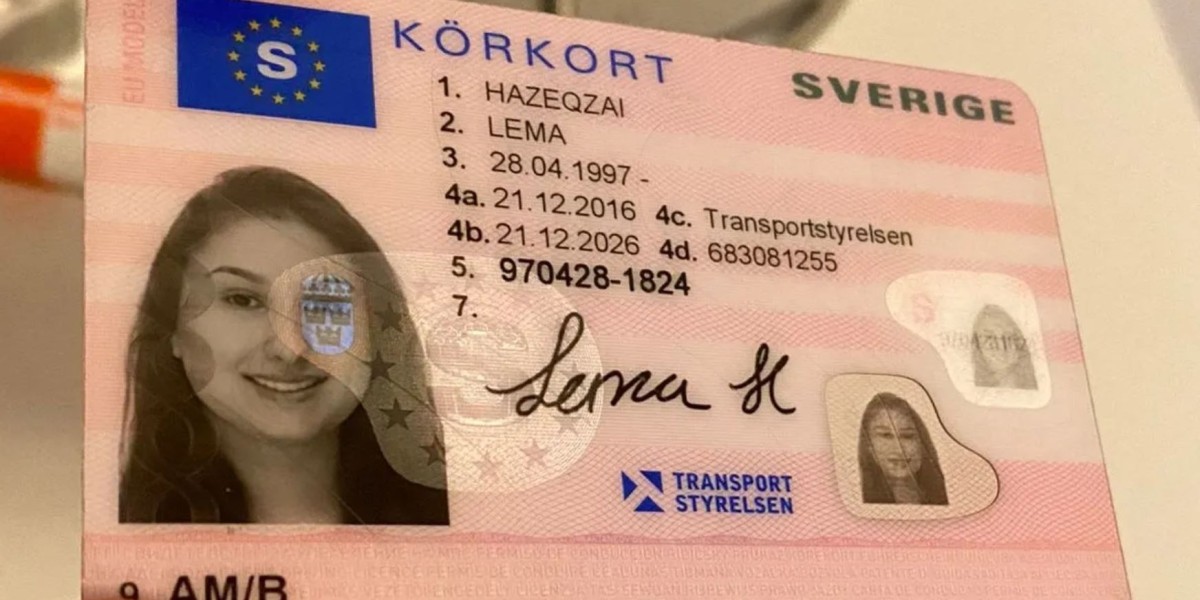Brooke-Spiegler Syndrome and Cylindroma: A Rare but Noteworthy Skin Condition
Brooke-Spiegler Syndrome (BSS) is a rare genetic disorder that draws attention not just because of its rarity, but also due to the unique skin tumors it causes. Among these, cylindromas stand out as the most commonly associated growths. Although non-cancerous, these tumors can cause considerable discomfort, cosmetic concern, and, in some cases, medical complications. Understanding the relationship between Brooke-Spiegler Syndrome and cylindromas helps in early diagnosis, better management, and improved patient outcomes.
What is Brooke-Spiegler Syndrome?
Brooke-Spiegler Syndrome is an inherited condition characterized by the development of multiple skin appendage tumors, primarily on the face, scalp, and neck. The syndrome is named after two dermatologists—James Brooke and Eduard Spiegler—who were the first to document the disorder in the 19th century. It follows an autosomal dominant inheritance pattern, meaning a single copy of the mutated gene from either parent is enough to cause the condition.
The condition is linked to mutations in the CYLD gene, a tumor suppressor gene located on chromosome 16. The CYLD gene normally helps regulate cell growth and prevent cells from proliferating uncontrollably. When this gene is mutated, cells, particularly those in sweat glands and hair follicles, can begin to grow into benign tumors.
Understanding Cylindromas
Among the hallmark features of Brooke-Spiegler Syndrome is the appearance of cylindromas—benign, slow-growing tumors that typically arise from the skin's adnexal structures, like sweat glands. These tumors most commonly appear on the scalp and are sometimes referred to as "turban tumors" when they grow in large, coalescing masses that wrap around the head like a turban.
Histologically, cylindromas appear as nests of basaloid cells in a jigsaw puzzle-like arrangement, surrounded by a dense, hyaline basement membrane. While they are typically benign, they can be disfiguring due to their size and number, especially when left untreated over time.
Other Tumors Associated with BSS
While cylindromas are the most recognizable tumors in Brooke-Spiegler Syndrome, patients may also develop:
Trichoepitheliomas: Benign tumors arising from hair follicles, often appearing as small papules on the face.
Spiradenomas: Painful tumors arising from sweat glands, sometimes confused with cysts due to their appearance.
In some cases, a patient may develop all three types of tumors, adding to the complexity of diagnosis and management.
Signs and Symptoms
Most individuals with Brooke-Spiegler Syndrome begin developing tumors in adolescence or early adulthood. Symptoms can vary widely in severity, but the most common signs include:
Small, flesh-colored or pink nodules on the scalp, face, or neck
Slow-growing, painless masses that may coalesce over time
Cosmetic disfigurement, particularly when tumors grow large
Rarely, pain or ulceration, especially in spiradenomas
Because the tumors are benign, they usually do not cause systemic illness. However, the psychological impact, particularly due to facial involvement, can be significant and should not be underestimated.
Diagnosis
Diagnosis is usually based on clinical presentation and family history. A dermatologist may identify the typical pattern of tumor growth and confirm the diagnosis through a skin biopsy. Genetic testing for CYLD mutations is becoming increasingly available and can help confirm the diagnosis, particularly in familial cases.
In some instances, the syndrome is discovered during evaluation of a solitary tumor that reveals histopathological features of a cylindroma or other adnexal tumor. Further investigation might uncover additional, previously unnoticed lesions.
Management and Treatment
There is no cure for Brooke-Spiegler Syndrome, and management focuses on controlling tumor growth, relieving symptoms, and maintaining cosmetic appearance. Treatment options include:
Surgical Removal: Excision of tumors is the most common treatment, especially for those causing discomfort or significant disfigurement.
Laser Therapy: Techniques like CO₂ laser ablation can help remove multiple small lesions with minimal scarring.
Cryotherapy: Freezing the tumors with liquid nitrogen may be useful for surface lesions, although it may not always be effective for deeper growths.
Radiotherapy and Chemotherapy: Rarely used, unless there's malignant transformation, which is very uncommon.
Experimental Treatments: Ongoing research into gene therapy and molecular inhibitors may offer future avenues for treatment.
Given the genetic nature of the condition, genetic counseling is highly recommended for affected individuals and their families. Early diagnosis in children of affected individuals can allow for proactive monitoring and treatment.
Quality of Life Considerations
The chronic nature of Brooke-Spiegler Syndrome can be emotionally taxing. Many individuals experience anxiety, depression, or social withdrawal due to the appearance of the tumors, particularly when located on visible parts of the body such as the face or scalp. Psychological support, including counseling and support groups, can play an important role in helping individuals cope.
Research and Future Directions
Research into the molecular biology of the CYLD gene continues to shed light on how these tumors develop and proliferate. Scientists are investigating whether drugs that modulate cell signaling pathways, particularly the NF-kB pathway (regulated by CYLD), can halt or slow tumor growth. If successful, such therapies could revolutionize the treatment of BSS and potentially reduce or eliminate the need for repeated surgeries.
Brooke-Spiegler Syndrome and Cylindroma: A Rare but Noteworthy Skin Condition
Brooke-Spiegler Syndrome (BSS) is a rare genetic disorder that draws attention not just because of its rarity, but also due to the unique skin tumors it causes. Among these, cylindromas stand out as the most commonly associated growths. Although non-cancerous, these tumors can cause considerable discomfort, cosmetic concern, and, in some cases, medical complications. Understanding the relationship between Brooke-Spiegler Syndrome and cylindromas helps in early diagnosis, better management, and improved patient outcomes.
What is Brooke-Spiegler Syndrome?
Brooke-Spiegler Syndrome is an inherited condition characterized by the development of multiple skin appendage tumors, primarily on the face, scalp, and neck. The syndrome is named after two dermatologists—James Brooke and Eduard Spiegler—who were the first to document the disorder in the 19th century. It follows an autosomal dominant inheritance pattern, meaning a single copy of the mutated gene from either parent is enough to cause the condition.
The condition is linked to mutations in the CYLD gene, a tumor suppressor gene located on chromosome 16. The CYLD gene normally helps regulate cell growth and prevent cells from proliferating uncontrollably. When this gene is mutated, cells, particularly those in sweat glands and hair follicles, can begin to grow into benign tumors.
Understanding Cylindromas
Among the hallmark features of Brooke-Spiegler Syndrome is the appearance of cylindromas—benign, slow-growing tumors that typically arise from the skin's adnexal structures, like sweat glands. These tumors most commonly appear on the scalp and are sometimes referred to as "turban tumors" when they grow in large, coalescing masses that wrap around the head like a turban.
Histologically, cylindromas appear as nests of basaloid cells in a jigsaw puzzle-like arrangement, surrounded by a dense, hyaline basement membrane. While they are typically benign, they can be disfiguring due to their size and number, especially when left untreated over time.
Other Tumors Associated with BSS
While cylindromas are the most recognizable tumors in Brooke-Spiegler Syndrome, patients may also develop:
Trichoepitheliomas: Benign tumors arising from hair follicles, often appearing as small papules on the face.
Spiradenomas: Painful tumors arising from sweat glands, sometimes confused with cysts due to their appearance.
In some cases, a patient may develop all three types of tumors, adding to the complexity of diagnosis and management.
Signs and Symptoms
Most individuals with Brooke-Spiegler Syndrome begin developing tumors in adolescence or early adulthood. Symptoms can vary widely in severity, but the most common signs include:
Small, flesh-colored or pink nodules on the scalp, face, or neck
Slow-growing, painless masses that may coalesce over time
Cosmetic disfigurement, particularly when tumors grow large
Rarely, pain or ulceration, especially in spiradenomas
Because the tumors are benign, they usually do not cause systemic illness. However, the psychological impact, particularly due to facial involvement, can be significant and should not be underestimated.
Diagnosis
Diagnosis is usually based on clinical presentation and family history. A dermatologist may identify the typical pattern of tumor growth and confirm the diagnosis through a skin biopsy. Genetic testing for CYLD mutations is becoming increasingly available and can help confirm the diagnosis, particularly in familial cases.
In some instances, the syndrome is discovered during evaluation of a solitary tumor that reveals histopathological features of a cylindroma or other adnexal tumor. Further investigation might uncover additional, previously unnoticed lesions.
Management and Treatment
There is no cure for Brooke-Spiegler Syndrome, and management focuses on controlling tumor growth, relieving symptoms, and maintaining cosmetic appearance. Treatment options include:
Surgical Removal: Excision of tumors is the most common treatment, especially for those causing discomfort or significant disfigurement.
Laser Therapy: Techniques like CO₂ laser ablation can help remove multiple small lesions with minimal scarring.
Cryotherapy: Freezing the tumors with liquid nitrogen may be useful for surface lesions, although it may not always be effective for deeper growths.
Radiotherapy and Chemotherapy: Rarely used, unless there's malignant transformation, which is very uncommon.
Experimental Treatments: Ongoing research into gene therapy and molecular inhibitors may offer future avenues for treatment.
Given the genetic nature of the condition, genetic counseling is highly recommended for affected individuals and their families. Early diagnosis in children of affected individuals can allow for proactive monitoring and treatment.
Quality of Life Considerations
The chronic nature of Brooke-Spiegler Syndrome can be emotionally taxing. Many individuals experience anxiety, depression, or social withdrawal due to the appearance of the tumors, particularly when located on visible parts of the body such as the face or scalp. Psychological support, including counseling and support groups, can play an important role in helping individuals cope.
Research and Future Directions
Research into the molecular biology of the CYLD gene continues to shed light on how these tumors develop and proliferate. Scientists are investigating whether drugs that modulate cell signaling pathways, particularly the NF-kB pathway (regulated by CYLD), can halt or slow tumor growth. If successful, such therapies could revolutionize the treatment of BSS and potentially reduce or eliminate the need for repeated surgeries.







